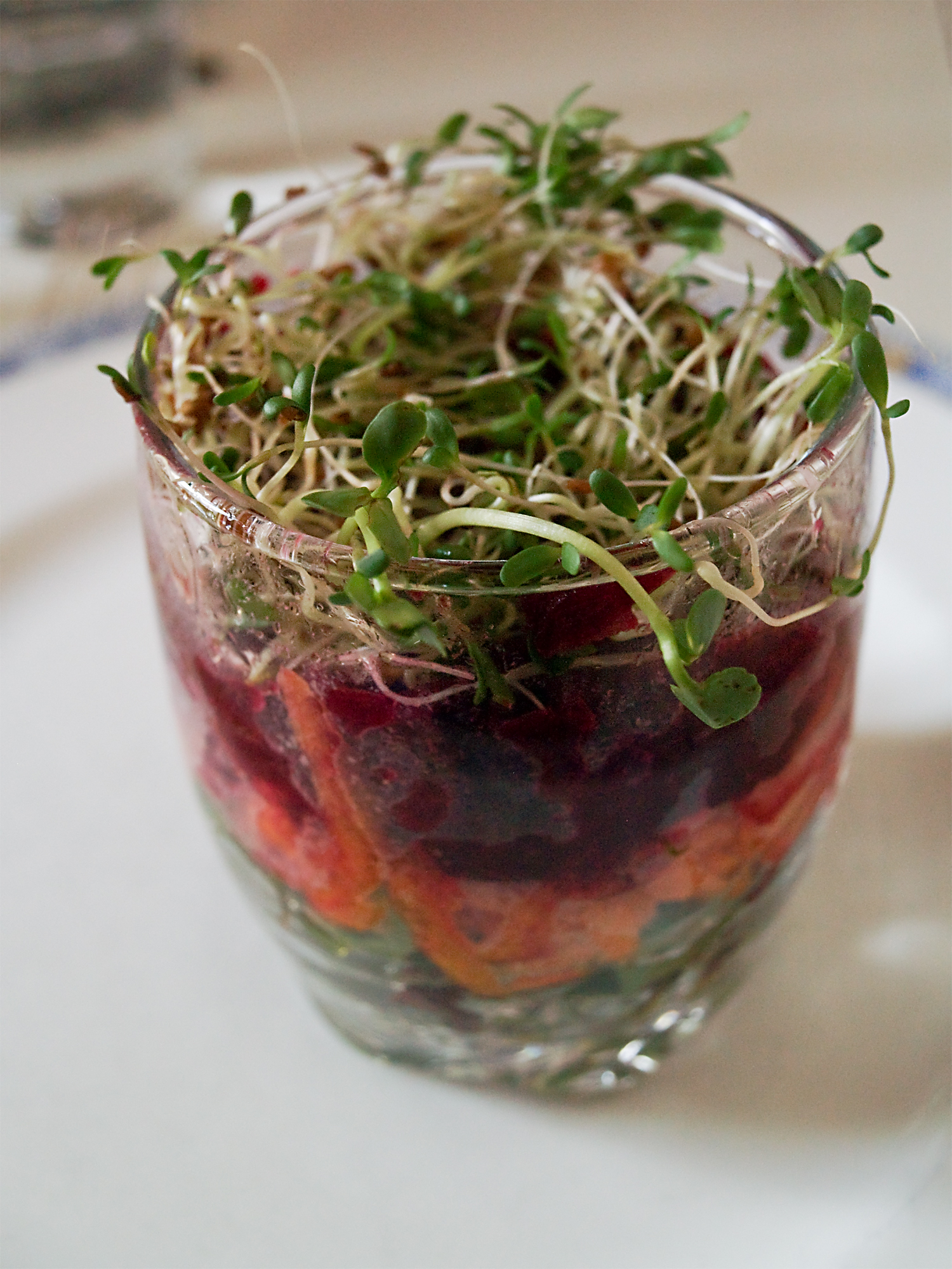|
Verrine
A verrine () is a glass container, often small, in which is served a starter, main course or dessert, rather than a drink. The glass might be able to be used for drinks, but when used for food, it is referred to as a verrine, and indeed the dish itself can be named ″a verrine″.''Larousse Gastronomique'', p. 887 left column, article "verrine" (French) This French word is usually left untranslated because there is no single English word for it. wiktionary:verrine Metonymously, a "verrine" designates in the cooking world a dish served in a verrine, in a vertical manner, allowing a different aesthetic and gustatory experience compared to a dish served on a plate. Philippe Conticini was the first (in 1994) to imagine a dessert served in a verrine. He introduced more than a simple evolution of the form, but rather a notable evolution in taste experience. The verticality and transparency of the verrine allows: * Immediate visual reading and construction of taste The gustat ... [...More Info...] [...Related Items...] OR: [Wikipedia] [Google] [Baidu] |
Philippe Conticini
Philippe Conticini (born 16 August 1963) is a French chef and pastry chef. Philippe Conticini has been described by the French press as "a pastry genius" and "one of the greatest pastry chefs of his time". Having worked in France, in the U.S. and in Japan, he conceived four innovations including verrines in 1994, which present dishes traditionally served on plates in a vertical, transparent container. After receiving several awards and working in Michelin-starred restaurants (including La Table d'Anvers and Petrossian), he cofounded and became head pastry chef of the Pâtisserie des Rêves, a patisserie with outlets in France, Japan and the UK. Biography Youth and apprenticeship Conticini was born on 16 August 1963 in Choisy-le-Roi (Val-de-Marne). He spent his childhood in his parents' kitchens at the Restaurant du Rocher in Vitry (Val-de-Marne), then at the Michelin-starred Restaurant du Parc in Villemomble (Seine-Saint-Denis). His apprenticeship began in 1980 at Alain Dutou ... [...More Info...] [...Related Items...] OR: [Wikipedia] [Google] [Baidu] |
Metonymy
Metonymy () is a figure of speech in which a concept is referred to by the name of something associated with that thing or concept. For example, the word " suit" may refer to a person from groups commonly wearing business attire, such as salespeople or attorneys. Etymology The words ''metonymy'' and ''metonym'' come ; , a suffix that names figures of speech, . Background Metonymy and related figures of speech are common in everyday speech and writing. Synecdoche and metalepsis are considered specific types of metonymy. Polysemy, the capacity for a word or phrase to have multiple meanings, sometimes results from relations of metonymy. Both metonymy and metaphor involve the substitution of one term for another. In metaphor, this substitution is based on some specific analogy between two things, whereas in metonymy the substitution is based on some understood association or contiguity. American literary theorist Kenneth Burke considers metonymy as one of four "master tro ... [...More Info...] [...Related Items...] OR: [Wikipedia] [Google] [Baidu] |
Taste
The gustatory system or sense of taste is the sensory system that is partially responsible for the perception of taste. Taste is the perception stimulated when a substance in the mouth biochemistry, reacts chemically with taste receptor cells located on taste buds in the oral cavity, mostly on the tongue. Taste, along with olfaction, the sense of smell and trigeminal nerve stimulation (registering texture, pain, and temperature), determines Flavoring, flavors of food and other substances. Humans have taste receptors on taste buds and other areas, including the upper surface of the tongue and the epiglottis. The gustatory cortex is responsible for the perception of taste. The tongue is covered with thousands of small bumps called lingual papillae, papillae, which are visible to the naked eye. Within each papilla are hundreds of taste buds. The exceptions to this is the filiform papillae that do not contain taste buds. There are between 2000 and 5000Boron, W.F., E.L. Boulpaep. 200 ... [...More Info...] [...Related Items...] OR: [Wikipedia] [Google] [Baidu] |
